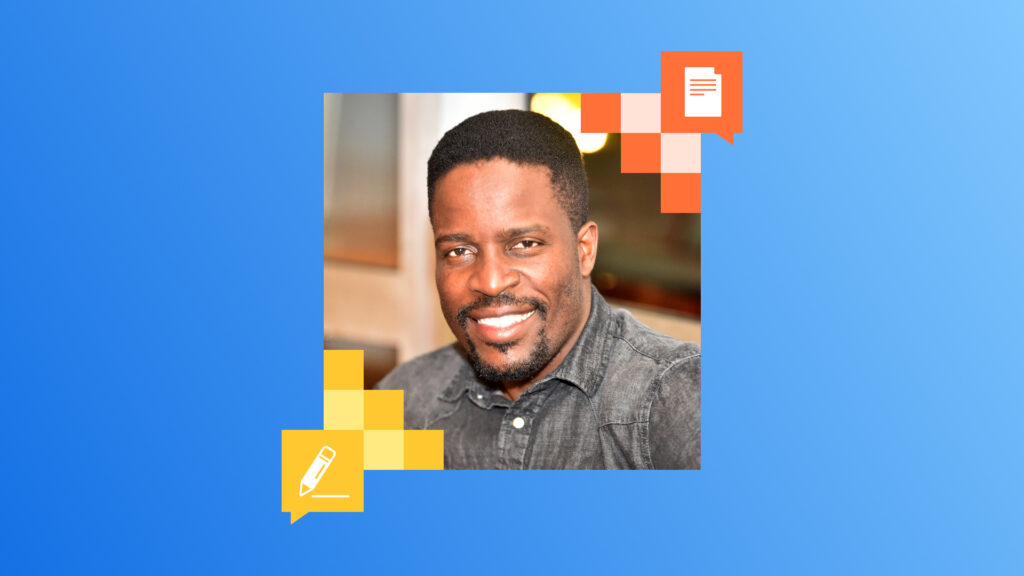A journalist-turned-product leader on reshaping the internet through community

Here at Mozilla, we are the first to admit the internet isn’t perfect, but we know the internet is pretty darn magical. The internet opens up doors and opportunities, allows for human connection, and lets everyone find where they belong — their corners of the internet. We all have an internet story worth sharing. In My Corner Of The Internet, we talk with people about the online spaces they can’t get enough of, the sites and forums that shaped them, and what reclaiming the internet really looks like.
This month, we’re catching up with Tawanda Kanhema, a journalist and product leader who’s worked across African newsrooms and driven innovation in Silicon Valley. A former Mozillian, he’s currently a board member at the News Product Alliance, where he’s helping empower newsrooms to thrive online. Ahead of the NPA Summit 2024: Tech & Trust, we chatted with Tawanda about his favorite internet rabbit holes (spoiler: creative coding!) and the importance of building strong online communities.
What is your favorite corner of the internet?
The News Product Alliance. It’s a community of product thinkers focused on shaping the future of news. We explore ways to empower newsrooms to strengthen relationships with their communities and design products that enhance how they reach audiences. There are many small newsrooms with limited resources coming up with innovative ways to use available technologies to expand their reach, strengthen their credibility and establish scalable business models.
What is an internet deep dive that you can’t wait to jump back into?
For the last 10 years, I’ve visited a site called Codrops once a week. It’s a community of animation designers and front-end developers sharing demos for others to remix or build on. It’s a great source of inspiration for me, especially when working on digital storytelling. Another site I love is threejs.org, a JavaScript library and application programming interface for creating 3D graphics. NASA even used it for their Mars landing simulation!
What is the one tab you always regret closing?
Honestly, I don’t really regret closing tabs — I use Pocket for everything. All my favorite resources from Codrops and three.js live there, so I can revisit them anytime.
What can you not stop talking about on the internet right now?
I’ve been obsessed with three.js and how it lets you create photorealistic animations with JavaScript and WebGL. For a while, I thought it might even replace some video production workflows, but video still leads in visual communication. Another tool I can’t stop talking about is A-Frame, a web framework that allows you to build 3D virtual worlds in the browser.
What was the first online community you engaged with?
I was part of Google’s Earth Outreach program, focused on how geospatial tools can be used to effect change, and enhance the representation of communities on maps. That led me to mapping projects in Zimbabwe, Namibia and Northern Ontario. It sparked my passion for mapping and documenting underrepresented places.
If you could create your own corner of the internet, what would it look like?
I’ve actually started creating it with Unmapped Planet. It’s an interactive archive of my photography from mapping projects. The site allows users to experience virtual reality tours of the places I’ve mapped. My goal is to create a visual archive and eventually make it more community-focused.
What articles and/or videos are you waiting to read/watch right now?
I have a ton saved in Pocket, mostly around imaging technologies in the generative AI space. I recently completed a Stanford AI course, so I’m diving into articles on how AI is being ethically used in newsrooms. One example is The Baltimore Times’ initiative, led by Paris Brown, to use generative AI create audio versions of the publication’s text stories. This project has expanded access and made The Baltimore Times’ content more accessible to the the community.
With the News Product Alliance creating space for news product builders to connect, how do you think nurturing a community like this can help shape the future of the internet?
We design online experiences that create support networks and connect product thinkers worldwide. And thanks to the power of the community, we are building programs that establish a cycle of support, like our Mentor Network (through which a few other mentors and myself are mentoring current and aspiring newsroom product managers).
The internet has been shaped by the interests of private companies and governments over the last 15 to 20 years, with civic institutions and technology organizations playing the lead role in establishing standards, and communities mostly left out. If we want to change that, we need more diverse communities and change agents ensuring that online content is credible and representative of diverse voices. NPA’s network of over 3,000 professionals is one such community, offering skills development, inspiration and examples of how newsrooms are solving similar problems. For example, we launched a News Product Management Certification program to help people learn product management and apply it in their newsrooms. We’re helping bridge the gap between data-driven decision-making and traditional editorial judgment.
Tawanda Kanhema is a journalist and product manager with a background in reporting across Africa and leading product strategy in Silicon Valley. He previously worked at Mozilla on Pocket and Firefox, connecting millions of users to high-quality content. As a board member of the News Product Alliance, Tawanda focuses on fostering innovation and community among news product builders, helping newsrooms adapt and thrive in the digital age.


